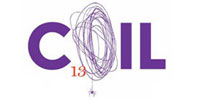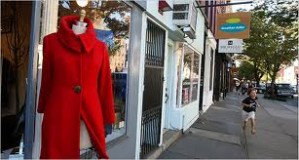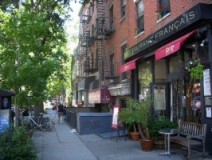SACRE
David Wampach / Association Achles (France)
The 1913 premiere of Nijinsky’s The Rite of Spring caused legendary scandal and has since been regarded as a milestone in dance history. French dancer / choreographer David Wampach draws inspiration from filmmaker Jean Rouch and photographer Trude Fleischmann, as he radically re-imagines Nijinsky’s group choreography into a duet. Wampach’s pioneering SACRE is equally as earthy, wild, and dissonant as the original.
“Breathtaking” Danser Magazine
“Brilliant Wampach” Montpellier Gazette
45 minutes

Co-presented with The Invisible Dog Art Center with additional support provided by Chez Bushwick
Jan 10 – 11, 14 7:30pm
Jan 13 5pm
The Invisible Dog Art Center: 51 Bergen St., Brooklyn
#COIL13
In 2002, David Wampach started his company: the Association Achles, where he revealed himself as one of the most trailblazing young choreographer of France. His solo circon c is (2004) won the first prize at the Biennale des jeunes créateurs d’Europe et de Méditerranée. High-profile performances such as BASCULE (2005), QUATORZE (2007), AUTO (2008) and BATTEMENT (2009) ensued (note that Wampach always capitalizes his titles). The choreographer is now also making waves internationally. He was laureate of the famous Villa Kujoyama programme in Kyoto and, unique for a non-commercial dance, his SACRE piece is sponsored by cosmetics giant Hermès.
Raw minimalism and abstract eroticism characterize Wampach’s work, as does a form of skillful emotional extremism. He admires conceptual makers, but finds it equally important to engage in dialogue with the canonical tradition and pop culture. A different work he made is CASSETTE (2011), based on the legendary masterpiece Nutcracker, using ballroom dance.
Curiosity for other art disciplines is a recurrent theme in Wampach’s artistic development. He collaborated with novelists and filmmakers. At the moment, the choreographer is working on his first film RITE, an echo of SACRE.
The Invisible Dog Art Center opened in October, 2009, a raw space in a vast converted factory building with a charmed history and an open-ended mission: to create, from the ground up, a new kind of interdisciplinary arts center. Over the last two years, over 50,000 people have attended our events: visual art exhibits; dance, theater, and music performances; film screenings; literary arts and poetry readings; lectures; community events; and more.
Long-term collaborations with artists are integral to The Invisible Dog’s mission, which is to create not only a new kind of art center, but also a new kind of artistic community.
The Invisible Dog brings together artists of all career stages, offering them unique opportunities for involvement. Over the last two years, the art center has evolved organically, developing with and alongside its diverse roster of collaborators.
Neither a commercial gallery nor a concept-driven non-profit, The Invisible Dog has a unique role in the New York arts scene. It has become a place where artists working in all media can do things they wouldn’t be able to do anywhere else in New York. The Invisible Dog’s core values of experimentation and collaboration are kept in view throughout the curatorial process, and as a result, our artists are freer and more autonomous than is typical.
The building at 51 Bergen Street is integral to The Invisible Dog’s identity. Built in the late 1800s, the 30,000 square-foot building housed working factories until the 1990s, when the last factory shut down, and the detritus from 100 years of industry was left to rot. The building was unused until 2008, when it was discovered by Lucien Zayan. The last factory, which made belts, had a hit in the 1960s with the “invisible dog” party trick, which gave the nascent art center its name.

The Invisible Dog Art Center is located in Boerum Hill, Brooklyn and is accessible by the F and G subways. This cool and calm region on the northwest side of Brooklyn is home to roughly 20,000 residents. Invisible Dog Art Center sits one block from Dean Street and two blocks from Atlantic Avenue, both boasting a plethora of bars and restaurants.
Boerum Hill claims a trendy stretch of Smith Street as its own, and small cafes and stores are dotted throughout the neighborhood’s interior, like the restaurant Building on Bond and the Brooklyn Circus boutique. On Fourth Avenue, bars like Cherry Tree and Pacific Standard have sprung up. There are also two Vietnamese sandwich shops. The New York Times


Choreographer David Wampach
Performers Tamar Shelef and David Wampach
Sound Designer Mikko Hynninen
Stage Manager Gaëtan Lebret
Artistic Collaborators Chiara Gallerani, Johanna Korthals Altes, Enora Rivière, Mark Tompkins and Christian Ubl
Co-produced by Festival Montpellier Danse, Centre national de la danse – Pantin, Centre Chorégraphique national de Franche-Comté à Belfort with support from Fondation d/entreprise Hermés, Tanzquartier – Wienn and adc – Generva, Modul-dance programme, Ménagerie de Verre for Studiolab. Additional help provided by Centre Chorégraphique National Montpellier Languedoc-Roussillon, CNDC, and Centre national de Danse contemporaine d’Angers. L’Association Achles receives the support from Direction Régionale des Affaires Culturelles Languedoc-Roussillon, Région Languedoc-Roussillon, Ville de Montpellier. Additional presentation support from Réseau en scène Languedoc- Roussillon within the framework of the collaboration between the Institut français and Région Languedoc- Roussillon, Mertz Gilmore Foundation, Harkness Foundation for Dance and Jerome Robbins Foundation, Office of Cultural Affairs, Consulate General of Israel, NY.

